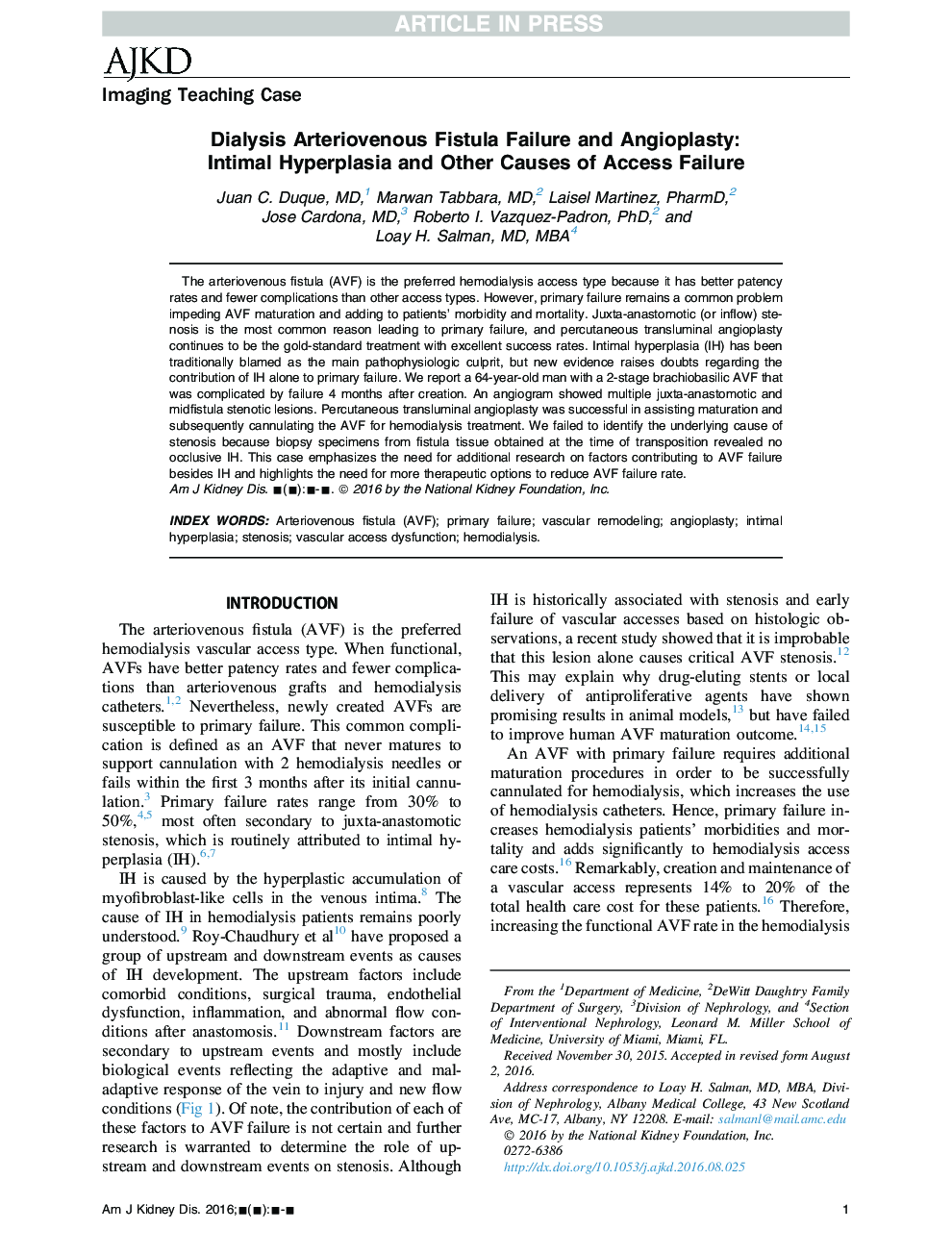| کد مقاله | کد نشریه | سال انتشار | مقاله انگلیسی | نسخه تمام متن |
|---|---|---|---|---|
| 5685797 | 1598232 | 2017 | 5 صفحه PDF | دانلود رایگان |
عنوان انگلیسی مقاله ISI
Dialysis Arteriovenous Fistula Failure and Angioplasty: Intimal Hyperplasia and Other Causes of Access Failure
دانلود مقاله + سفارش ترجمه
دانلود مقاله ISI انگلیسی
رایگان برای ایرانیان
کلمات کلیدی
موضوعات مرتبط
علوم پزشکی و سلامت
پزشکی و دندانپزشکی
بیماریهای کلیوی
پیش نمایش صفحه اول مقاله

چکیده انگلیسی
The arteriovenous fistula (AVF) is the preferred hemodialysis access type because it has better patency rates and fewer complications than other access types. However, primary failure remains a common problem impeding AVF maturation and adding to patients' morbidity and mortality. Juxta-anastomotic (or inflow) stenosis is the most common reason leading to primary failure, and percutaneous transluminal angioplasty continues to be the gold-standard treatment with excellent success rates. Intimal hyperplasia (IH) has been traditionally blamed as the main pathophysiologic culprit, but new evidence raises doubts regarding the contribution of IH alone to primary failure. We report a 64-year-old man with a 2-stage brachiobasilic AVF that was complicated by failure 4 months after creation. An angiogram showed multiple juxta-anastomotic and midfistula stenotic lesions. Percutaneous transluminal angioplasty was successful in assisting maturation and subsequently cannulating the AVF for hemodialysis treatment. We failed to identify the underlying cause of stenosis because biopsy specimens from fistula tissue obtained at the time of transposition revealed no occlusive IH. This case emphasizes the need for additional research on factors contributing to AVF failure besides IH and highlights the need for more therapeutic options to reduce AVF failure rate.
ناشر
Database: Elsevier - ScienceDirect (ساینس دایرکت)
Journal: American Journal of Kidney Diseases - Volume 69, Issue 1, January 2017, Pages 147-151
Journal: American Journal of Kidney Diseases - Volume 69, Issue 1, January 2017, Pages 147-151
نویسندگان
Juan C. MD, Marwan MD, Laisel PharmD, Jose MD, Roberto I. PhD, Loay H. MD, MBA,